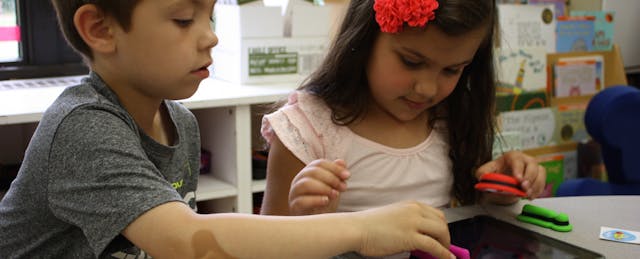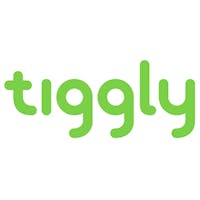May 28, 2015, PUTNAM VALLEY, NEW YORK – 106 kindergarten students sat eagerly awaiting a special surprise. Shifting anxiously in their chairs, they whispered back and forth in breathless anticipation as they tried to figure out what was about to come through the door.
In a nearby hallway, I gathered with Putnam Valley School District principals, teachers, technology specialists, and the founders and colleagues from my learning company, Tiggly. The grownups were diligently working on the final details for the official release of our startup’s newest Learning System, Tiggly Words. As we walked into the classroom with armfuls of colorful manipulatives, students began to squeal, cheer, and clap; the energy was electric.
Once the students had their new tools in hand, they turned their attention to the tablets. They worked in pairs, sharing letters and swapping vowels as they solved word problems. They reflected on what they saw on screen and discussed the words they’d learned. Exclaimed one child, “Oh man! I spelled COB!” Wide-eyed, she then asked, “What did you spell?!”
The Putnam Valley kindergarteners were taking part in one of the largest early childhood, digital literacy play sessions on record. Putman educators had brought in Tiggly because of the unique and engaging way we pair traditional manipulatives with the iPads the district was rolling out. Tiggly’s Learning Platform allows children to enhance their language, creativity, literacy, and math skills by marrying the most important aspects of physical play with the depth of content available from digital learning systems. In doing so, we offer an optimal learning environment for students between the ages of two and eight years old.
“We know physical play is an integral part of children's development,” says Dr. Azadeh Jamalian, Chief Learning Officer and cofounder of Tiggly. “All of Tiggly’s learning systems are designed from the ground up and are based on the latest research.” Adds Jamalian, "We bring physical play into the digital sandbox."
Tiggly's Learning Systems for classrooms come with manipulatives and curriculum-aligned apps, as well as student workbooks, in-class activities with teacher guidelines, and Thinker Journals--all of which allow students to reflect on what they have learned. The Learning Systems available today include Tiggly Shapes, Tiggly Math, and Tiggly Words.
Tiggly Shapes is a set of four geometric forms designed to help children learn about fundamental geometry concepts, improve language skills and develop motor skills, spatial thinking, and creativity. A recent study at Lewis and Clark College, funded by the National Science Foundation, found that preschool-age children who used Tiggly Shapes with iPads had a significant improvement in shape recognition and played more creatively than children using iPads alone. Tiggly Shapes Learning System includes three learning apps: Stamp, Draw, and Safari.
Tiggly Math is inspired by the classic Cuisenaire rods and includes five magnetic counting rods designed to help students develop understanding of math operations such as addition, number line, and one-to-one correspondence skills. A study by independent research firm PlayCollective showed increases in early number skills of up to 71% for kids who played with Tiggly Math for only two weeks. Tiggly Math Learning System includes three learning apps: Cardtoons, Chef, and Addventure.
Tiggly Words is specifically focused on early literacy. A set of five vowels helps students recognize phonemes, construct sounds, and learn words. Tiggly Words Learning System includes three learning apps: Tales, Submarine, and Doctor.
Tiggly’s presence in classrooms is growing rapidly. Since launching in schools in early 2015, the company's Learning Systems are now used in more than 700 classrooms ranging from nursery to 2nd grade. Its popularity is due in part to teachers’ desires to add a tactile dimension to their students’ digital learning, one that aligns with early childhood curriculum.
“We are delighted that more and more teachers and schools are integrating our learning tools into the classroom, a sign that our products form part of the future of play and learning,” says Phyl Georgiou, CEO & cofounder of Tiggly. “We are honored to be working with so many educators who have harnessed the unique learning opportunities that only Tiggly provides.”
As for Putnam Valley kindergartners, there is more Tiggly in their future. The school district will be putting iPads into all their kindergarten classrooms; Tiggly Shapes, Math and Words will be along for the ride. “Watching the kindergarten students become instantly engaged with the software was impressive and admittedly unexpected,” says Putnam Valley Principal Ed Hallisey. “Just think if we can harness this energy and excitement throughout their next 12 years.”
To find out how you can bring Tiggly to your school, email educators@tiggly.com. If attending ISTE 2015 in Philadelphia, stop by Booth #139 for a hands-on demonstration. If you would like to set-up a meeting during ISTE, email Amanda@tiggly.com.



